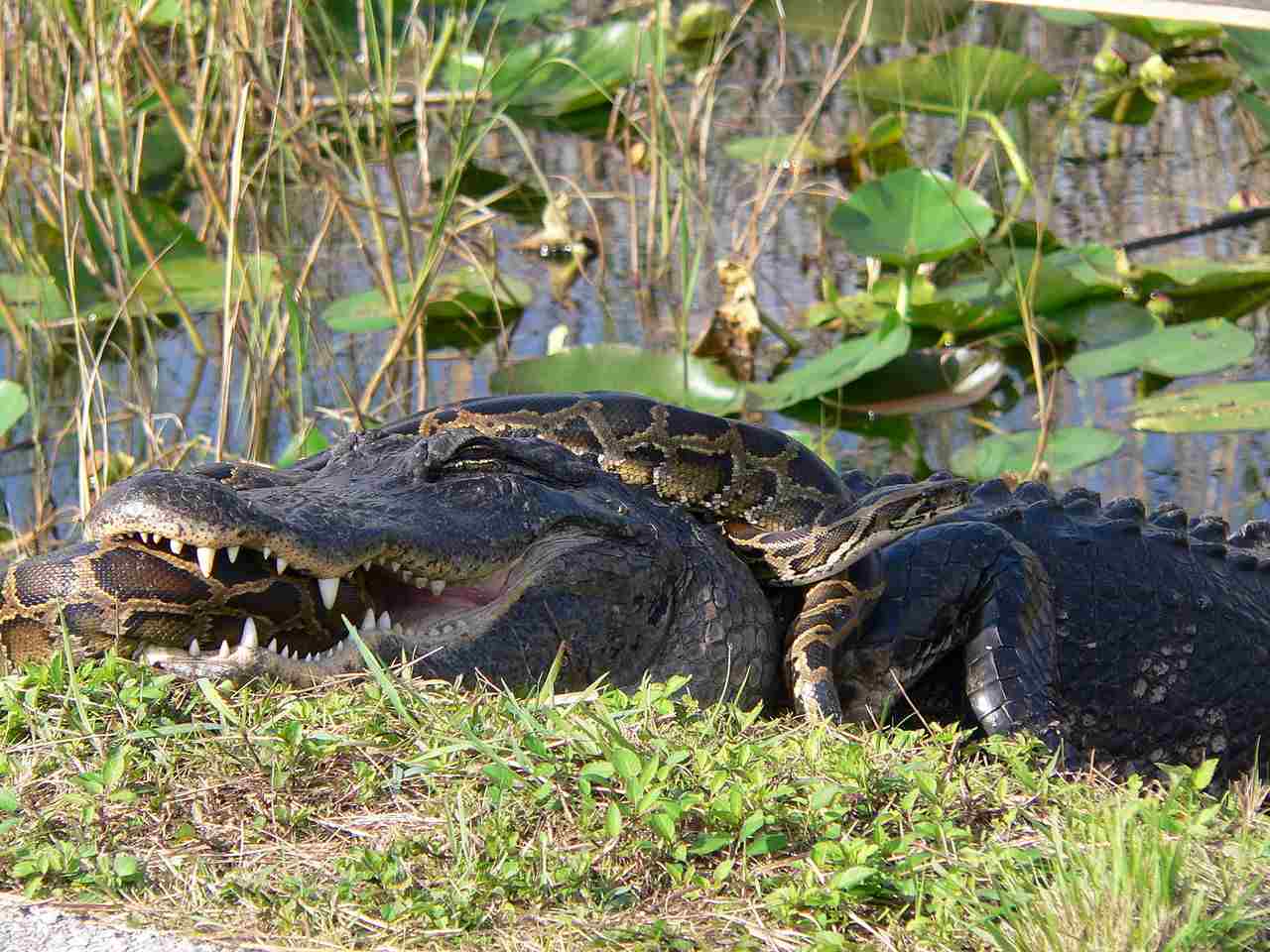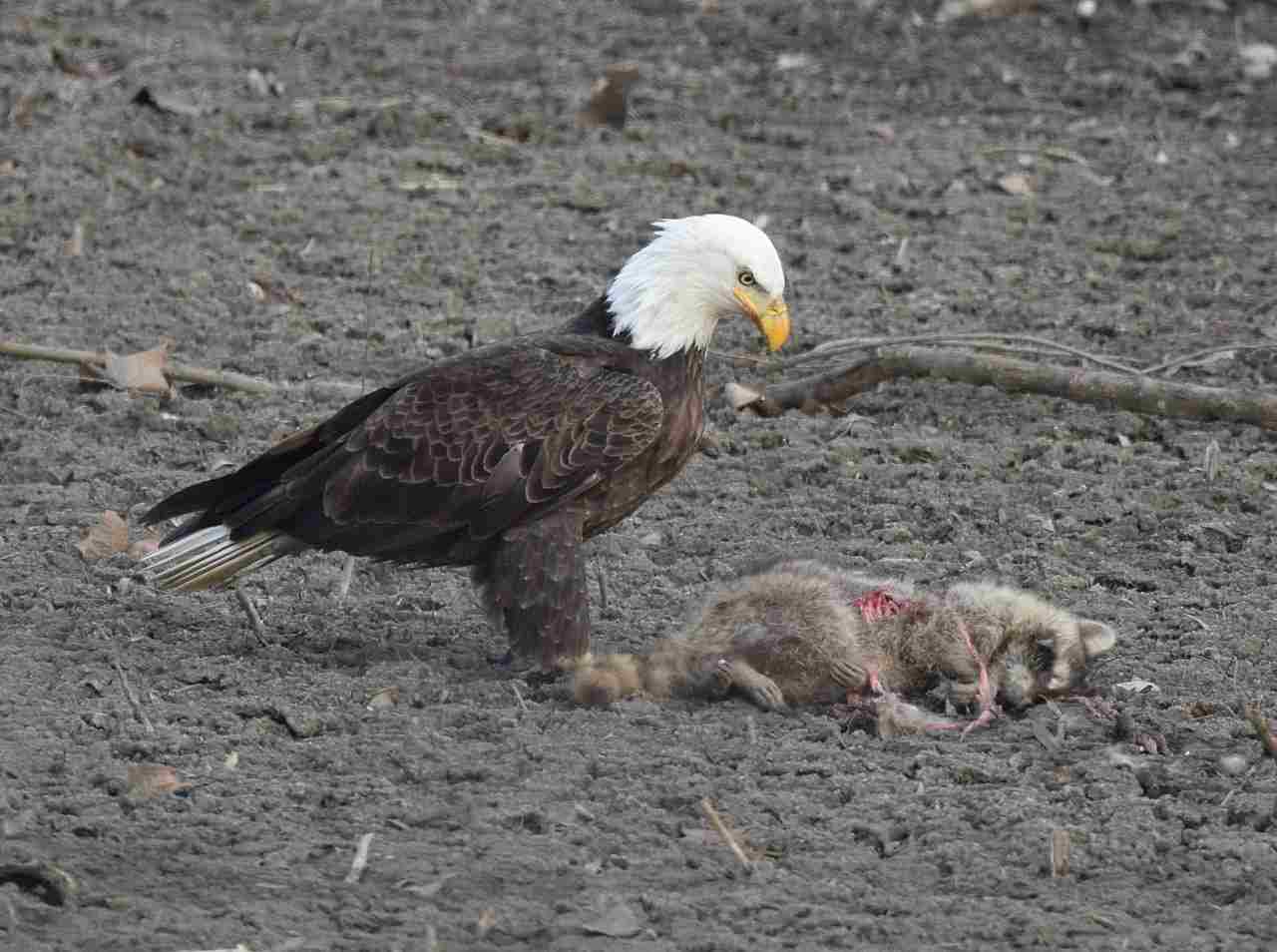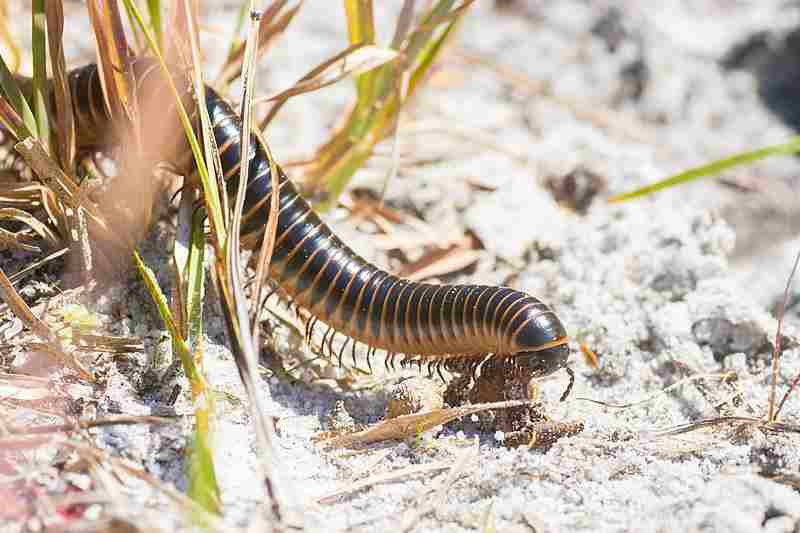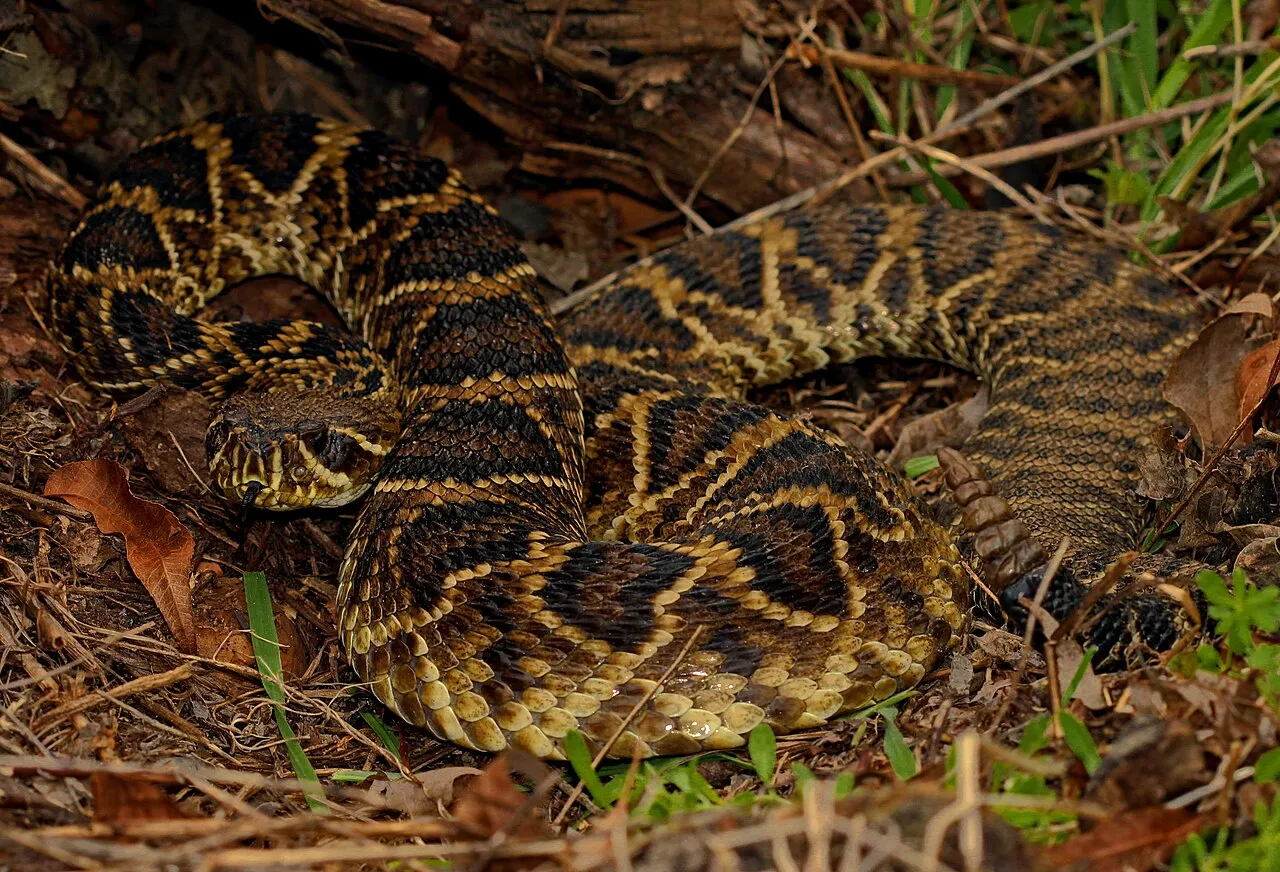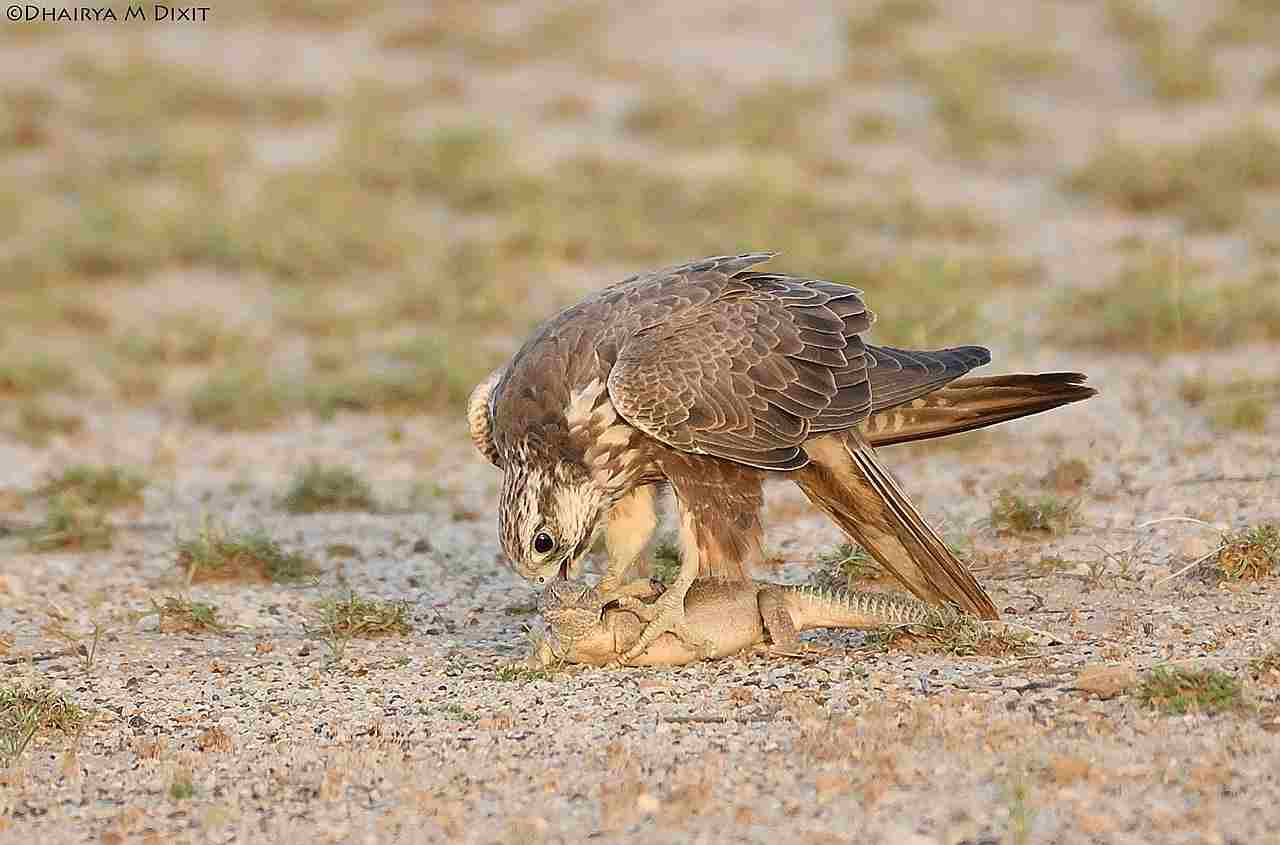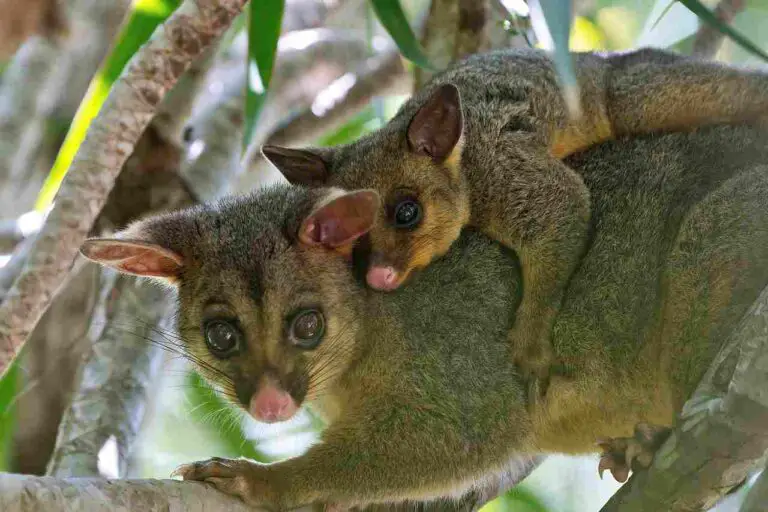Burmese Python Predators In Florida, Discussed
Burmese Python Predators In Florida are primarily alligators, which can feed on both juvenile and adult pythons. Juvenile pythons are more vulnerable, with birds of prey like hawks and eagles, and carnivorous mammals like raccoons, potentially preying on them. Human intervention is a significant factor in controlling the Burmese python population in Florida, as the invasive species has few natural enemies in the region.
What Eats Pythons In Florida?
Pythons, particularly Burmese pythons, are invasive species in Florida that have established themselves in ecosystems like the Everglades. Due to their size, there are few natural predators for adult Burmese pythons. However, there are some instances where certain animals can prey on pythons, especially the smaller or younger individuals.
Juvenile Pythons and Their Predators
Young pythons, being smaller and more vulnerable, are at greater risk of predation. Some of the common predators that prey on juvenile pythons in Florida include:
-
Alligators: These large reptiles are among the few predators capable of preying on both young and adult pythons. There have been reports of alligators attacking and eating pythons, though it’s not a frequent occurrence.
-
Birds of Prey: Species like hawks and eagles can target smaller pythons, taking advantage of their size and agility. Juvenile pythons can be an opportunistic meal for these birds.
-
Carnivorous Mammals: Some smaller mammals, such as raccoons and foxes, may prey on python eggs or very young pythons. These mammals are opportunistic and could attack if they come across a vulnerable python.
Predators of Adult Pythons
The list of predators capable of taking down adult pythons is quite short due to their large size and strength. Apart from alligators, few predators can challenge a fully grown Burmese python. Occasionally, large cats like panthers might engage with pythons, but such encounters are rare.
Human Predation
In Florida, humans are actively involved in controlling the python population. Hunters, researchers, and wildlife management professionals use a variety of methods to capture and eliminate pythons to mitigate the impact on native wildlife. Organized hunts, like the Florida Python Challenge, invite members of the public to help with python control, providing incentives for python removal.
Overall, the lack of natural predators for adult pythons in Florida is a significant factor contributing to their successful establishment and rapid population growth. It emphasizes the importance of human intervention in managing and controlling the invasive Burmese python population to protect native wildlife and ecosystems.
Are There Any Predators of the Burmese Python?
In the wild, predators for Burmese pythons are limited, especially when the snakes reach their larger adult size. This fact is part of why they can become invasive and spread rapidly when introduced to non-native environments like Florida.
Natural Predators in Native Habitat
In their native habitats in Southeast Asia, juvenile Burmese pythons have more natural predators, including birds of prey, large reptiles, and other carnivorous mammals. As these pythons grow, their size becomes a deterrent to most predators, with large adults facing very few threats.
Predators in Florida
In Florida, the list of predators is even shorter because the ecosystem has evolved without large snakes like the Burmese python. Some potential predators for Burmese pythons in Florida are:
-
Alligators: Alligators are one of the few native predators capable of attacking and consuming adult Burmese pythons. They are formidable in their own right and can predate on pythons if the opportunity arises.
-
Birds of Prey: Birds like hawks, eagles, and owls may prey on juvenile pythons or python eggs. While these birds are effective at controlling smaller python populations, they aren’t equipped to handle adult pythons.
-
Carnivorous Mammals: Foxes, raccoons, and other smaller carnivores might target python eggs or juveniles, but these encounters are rare, and these mammals aren’t likely to challenge an adult python.
Human Intervention
Given the limited natural predators for Burmese pythons in Florida, human intervention plays a crucial role in population control. State and federal wildlife agencies, as well as volunteer hunters, actively engage in efforts to reduce the python population. These efforts include trapping, organized hunting events like the Python Challenge, and other control measures.
Overall, the lack of natural predators for adult Burmese pythons contributes to their rapid proliferation in Florida, making human efforts critical to managing the invasive species’ impact.
What Animals Are Affected by Burmese Pythons in Florida?
Burmese pythons in Florida have had a significant impact on local ecosystems, primarily in the Everglades. As apex predators, they can disrupt the food chain by preying on a wide range of native wildlife. Below are some of the primary groups of animals affected by the presence of Burmese pythons in Florida.
Mammals
Burmese pythons are known to prey on many native mammal species. These snakes have been observed consuming:
-
Small Mammals: Raccoons, opossums, and rabbits are common prey for Burmese pythons.
-
Medium-Sized Mammals: White-tailed deer and bobcats have been found in the stomachs of captured pythons.
-
Endangered Species: The invasive pythons pose a significant threat to native species that are already endangered, like the Key Largo woodrat and the Florida panther.
Birds
Pythons also affect various bird species in Florida. They often prey on:
-
Ground-Nesting Birds: Turkeys and other ground-nesting birds are at risk of python predation.
-
Wading Birds: Storks, ibises, and other birds that inhabit the marshes are potential python prey.
-
Birds of Prey: Even birds at higher trophic levels, like hawks and owls, can fall victim to pythons.
Reptiles
Although pythons are themselves reptiles, they can also prey on other reptiles, including:
-
Turtles: Both eggs and adult turtles are at risk.
-
Alligators: While alligators can predate on pythons, the reverse is also true, with pythons sometimes preying on young alligators.
The impact on these animal groups leads to a ripple effect throughout the ecosystem, as Burmese pythons disrupt the balance of native flora and fauna. These effects underscore the importance of ongoing efforts to control and manage the invasive Burmese python population in Florida.
How Did the Burmese Python Get to Florida?
The Burmese python (Python bivittatus) is native to Southeast Asia, but it has become an invasive species in Florida, particularly in the Everglades. Understanding how it got there involves examining several factors, including the exotic pet trade, hurricanes, and human negligence.
Exotic Pet Trade
One of the primary ways Burmese pythons ended up in Florida is through the exotic pet trade. Throughout the 1980s and 1990s, these snakes were imported into the United States and became popular pets due to their exotic appearance and reputation as docile snakes. However, Burmese pythons can grow quickly, reaching lengths of over 20 feet, which makes them challenging to care for as they mature.
Many pet owners, unable to cope with the size and demands of these large snakes, released them into the wild. This act of abandonment was a significant contributing factor to the establishment of Burmese pythons in Florida’s ecosystems. Releasing exotic pets into the wild is illegal and can have dire consequences, as evidenced by the python problem in Florida.
Hurricane Andrew and Breeding Facilities
Another critical event in the introduction of Burmese pythons to Florida was Hurricane Andrew in 1992. The hurricane caused extensive damage across South Florida, including to several exotic animal breeding facilities. During the storm, Burmese pythons and other exotic species were released into the wild, either due to structural damage or by owners who could no longer care for them. These escaped snakes, once in the wild, found a conducive environment for breeding and survival in the Everglades.
Breeding and Establishment
Once Burmese pythons were released into the wild, they began to breed. The climate in South Florida, with its warm temperatures and dense vegetation, proved ideal for these snakes. Without significant natural predators and with a vast array of prey species, the pythons thrived and established a breeding population. Over time, their numbers grew, leading to the widespread infestation seen today.
What Is a Python’s Natural Enemy?
In their native habitats, pythons face a range of natural enemies, but these tend to diminish as the snakes grow larger. Here’s a look at what might threaten pythons at different stages of their life cycle:
Predators in Their Native Range
In Southeast Asia, where Burmese pythons are native, they face predators that are familiar with dealing with large snakes. These include:
-
Large Carnivores: Animals like tigers and leopards can be predators of pythons, particularly if they are hunting for food or defending territory.
-
Birds of Prey: Eagles and hawks can target young pythons or smaller species of snakes.
-
Other Reptiles: Crocodiles and large monitor lizards are also potential threats to pythons, especially smaller or younger individuals.
Competition with Other Species
In the wild, competition for resources can also act as a natural control on python populations. In their native range, pythons might compete with other large predators for prey, which can limit their expansion.
Human Impact
Humans are perhaps the most significant threat to pythons, whether through intentional hunting, habitat destruction, or environmental changes. In regions where pythons are native, they might be hunted for their skin, meat, or as a perceived danger to humans and livestock.
In the context of Florida, the primary natural enemy for pythons is humans, as there are few other predators capable of keeping their population in check. Efforts to control and manage the invasive python population are critical to reducing their impact on native ecosystems and wildlife.
| Topic | Description |
| What Eats Pythons In Florida? |
Few natural predators exist for adult Burmese pythons. Alligators are a primary predator, while birds of prey and carnivorous mammals may prey on juveniles and eggs. Humans are heavily involved in controlling the python population.
|
| Are There Any Predators of the Burmese Python? |
In Florida, adult Burmese pythons have few predators besides alligators. Juveniles are more vulnerable to birds of prey and smaller carnivorous mammals. Human intervention plays a significant role in population control.
|
| What Is a Python’s Natural Enemy? |
In their native habitats, Burmese pythons may face threats from large carnivores like tigers and leopards, birds of prey, and other reptiles like crocodiles and monitor lizards. In Florida, human activities are the primary control method.
|
| What Animals Are Affected by Burmese Pythons in Florida? |
Burmese pythons prey on a wide range of native wildlife in Florida, affecting mammals, birds, and reptiles. Their presence has a ripple effect on the ecosystem, disrupting the balance and endangering various species.
|
| How Did the Burmese Python Get to Florida? |
Burmese pythons entered Florida through the exotic pet trade, with many released into the wild when they became too large for pet owners. Hurricane Andrew in 1992 also contributed to their release from exotic animal breeding facilities, leading to a breeding population in the Everglades.
|
